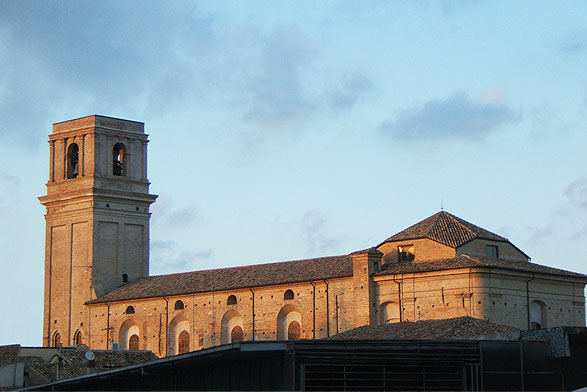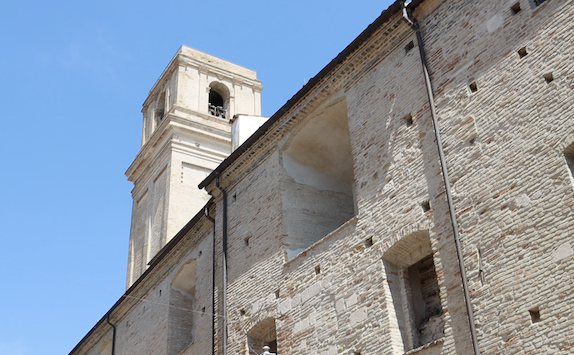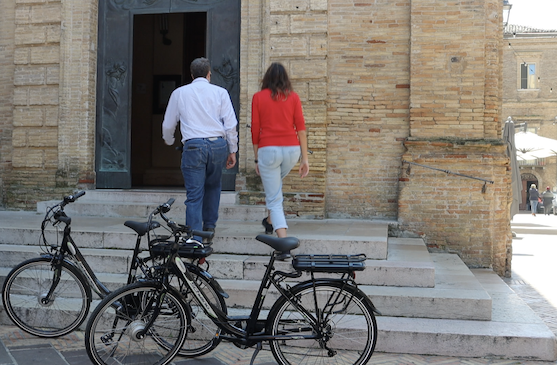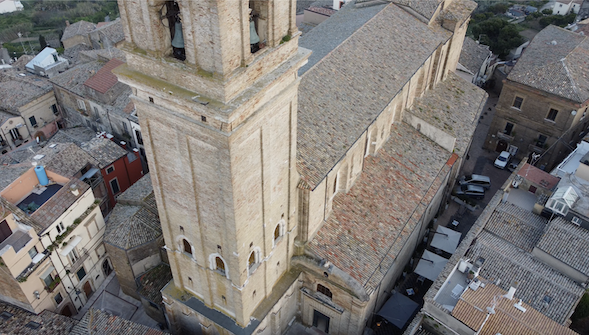Santa Maria Maggiore
The Impressive Fortress Church of Santa Maria, a Place of Devotion and Mystery
If you look at Vasto from its beach, you will immediately notice an imposing bell tower that stands majestically over the entire medieval village, observing you from the hill. At its feet, the grand church that overlooks every other building. It is the Church of Santa Maria Maggiore, included in the List of Monumental Buildings in Italy and a pride of the city.
Once you reach the village, from the main street COrso De Parma you can take Via Santa Maria. When you arrive at the square of the same name, instead of the solemn facade you imagined, you will find the silhouette of a modest structure with a small portal at the top of a few steps.
Once you enter the doorway, you will find yourself in a small vestibule at the base of the right nave. Step inside the temple, and the grand central nave will open up before you in all its neoclassical splendor. Only then will you understand that its shape was concealed from the outside by the immense bell tower placed exactly where the facade should have been.
The Collegiate Church of Santa Maria Maggiore is a treasure trove of mystery. It was built on the walls of a mighty fortress known as “La Battaglia,” which incorporated the nearby Church of Sant’Eleuterio, which dates back to the Carolingian era. In the early 15th century, it was the cradle of the Brotherhood of the Gonfalone, inspired by penitential practices.
In the chapel at the end of the right nave, it preserves the relic of the Holy Thorn donated by Francesco Ferdinando d’Avalos. Popular legend has it that the thorn blossoms every year when it is carried in procession on the Friday before Palm Sunday through the streets of the city.
The gift of the relics of Saint Cesarius is owed to Marquis Cesare Michelangelo, who also donated paintings by Veronese and works from the school of Titian to the church, which are now in the left nave. The martyr’s skeleton is housed in a glass case in the crypt beneath the presbytery. The legend, in this case, claims that the saint was placed in a supine position and that he rises a few degrees every time an earthquake is imminent. When he sits upright, it will herald the collapse of the church.
At the beginning of the 19th century, the church was stripped of its parish and chapter, which it regained after over a century. Nevertheless, in the 19th century, it was maintained and expanded thanks to the devotion of the d’Avalos family, the confraternities, and the Masonic brotherhood, whose symbols can be found in the tomb of Count Venceslao Mayo at the base of the right nave.
The Church of Santa Maria Maggiore is in our itinerary:
THE D'AVALOS CAPITOL
The proposed stages:
- Palazzo d’Avalos
- San Francesco da Paola
- Chiesa del Carmine e Arcivescovado
- Chiesa di Sant’Antonio
- Collegiata di Santa Maria
Area riservata
Schede infografiche
- Chiesa di San Pietro
- Vicoli medievali
- Teatro Rossetti
- Palazzi nobiliari del '700
Audioguide
- Il giubileo dei Vastesi
- Il guasto d'Aymone
- Chiesa di San Pietro





